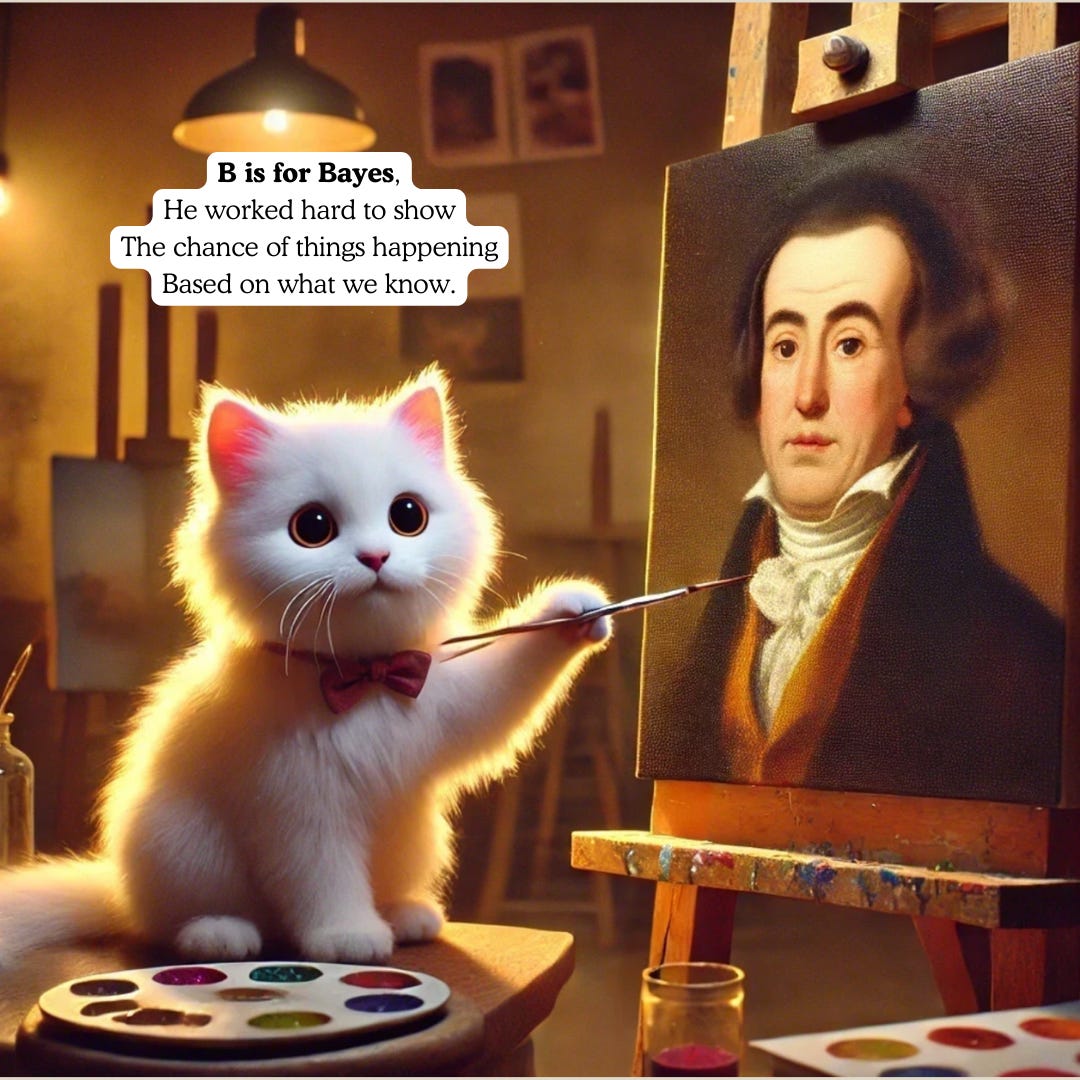This is part of a book project called: The ABC’s of Statistics… with Cats. If you’re new here or not sure of what I’m talking about, see my previous post. My plan is to release a page each week on Instagram with more details in this newsletter. It’s written with kids in mind, but I’ve also included some notes to grown-ups in italics 💁🏻♀️.
B is for… Ball? Banana? Butterfly?
Meet Thomas Bayes, a really clever person who was born in England over 300 years ago. Bayes was a minister (which means he worked at a church) and a mathematician (which means he loved math and figuring things out). He wasn’t famous during his lifetime, but later, other mathematicians realized his work was important and found other cool math rules, now called the field of Bayesian Statistics.
Explain like I’m five(-ish)
Bayes is most famous for inspiring a special math rule called Bayes Theorem. It helps us make better guesses about all kinds of things by using what we know and new clues. Think of it like being a math detective — you start with a guess and gather clues to make even better guesses.
Fun example: Guessing the color of gumballs in a jar 🔴 🔵
Let's say you have a big jar filled with gumballs, but you don't know how many are red or blue because the jar isn’t transparent. You want to figure out the number of red gumballs compared to blue gumballs.
💁🏻♀️ Because my goal is to help elementary aged kids understand the concepts, I’m not going to quantify each probability or use any formulas at this time.
Start with a guess:
Pretend you have no idea how many red and blue gumballs there are, so you start with the best guess you can come with: about as many red gumballs as blue gumballs.
💁🏻♀️ This is called the “prior” probability. It’s the best guess before any additional information is collected. I picked equal parts red and blue, but you can pick anything else.
Get some clues:
You pick a few gumballs from the jar. You close your eyes so you don’t pick only certain colors. Let's say you pick 10 gumballs, and 7 of them are red, and 3 are blue.
💁🏻♀️ This step involves gathering some data to calculate the likelihood of picking red or blue gumballs.
Make your guess better:
Now, you use what you saw from step 2 to make a better guess. Since you picked more red gumballs, you might guess there are more red gumballs in the jar.
💁🏻♀️ This updated guess is called the “posterior” probability.
By using these steps — starting with a guess, gathering clues and updating our guesses — we’re starting to think like a Bayesian statistician!
A thought experiment:
Let’s say you really want another piece of candy today 🍭🍭🍭 but you’re not sure if Mom will say yes or no. Mom usually says no to extra candy, so you feel like there’s little hope in asking her 😐. But then, you notice that Mom just finished baking a special dessert for dinner. Maybe she’s in a sweet-tooth mood today! 😬 Do you feel more hopeful that she would say yes if you ask her now?
Special thanks to Adriana Crespo-Tenorio (another #datasciencemom, political scientist and my go-to Bayesian statistician) for reviewing this note 🌺.


